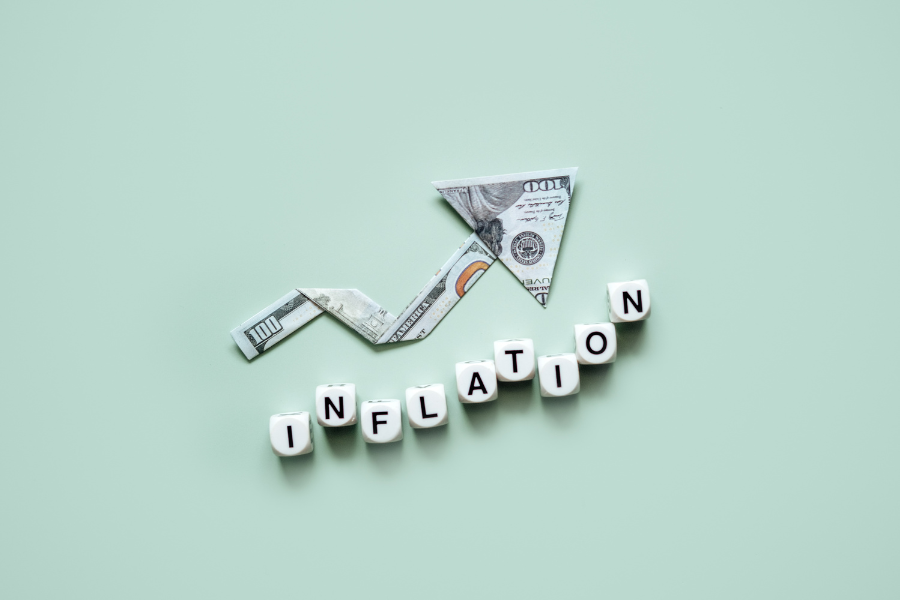What Is Inflation?
To start off, let's tackle the basics. What exactly is inflation?! Inflation refers to the rate at which the general level of prices for goods and services in an economy rises over a specific period of time. As inflation occurs, the purchasing power of money declines, meaning you'll need more money to buy the same item compared to before.
For instance, if a loaf of bread cost $2 last year and now costs $2.10, the inflation rate for that item is 5%. While some inflation is considered normal and even beneficial for economic growth, excessive inflation (or hyperinflation) can disrupt economies and hurt individuals' financial well-being.
Types of Inflation: Demand-Pull vs. Cost-Push
There are two primary drivers of inflation: demand-pull inflation and cost-push inflation.
1. Demand-Pull Inflation
Demand-pull inflation occurs when the demand for goods and services exceeds their supply. Some common causes of this type of inflation include:
- Increased consumer spending, often due to higher disposable incomes.
- Government stimulus measures, such as tax cuts or direct payments.
- Strong business investment or export growth.
Example: During economic recovery periods, demand surges for products like housing and automobiles, driving the prices up.
2. Cost-Push Inflation
Cost-push inflation arises when the production costs of goods and services increase, and businesses pass those costs onto consumers. Common causes of this type of inflation include:
- Rising wages or labor shortages.
- Higher raw material prices, such as oil or steel.
- Supply chain disruptions or tariffs.
Example: A spike in crude oil prices leads to higher transportation costs, increasing the price of goods in stores.
How Inflation Is Measured: CPI, PPI, and Core Inflation
Economists use several indicators to measure inflation. Here is a breakdown of the key terms:
1. Consumer Price Index (CPI)
The CPI tracks the average change over time in the prices of a basket of goods and services commonly purchased by households, such as food, housing, and transportation. It's the most widely used inflation indicator for consumers.
2. Producer Price Index (PPI)
The PPI measures the average change in prices received by domestic producers for their output. It reflects inflation at the wholesale or production level, often signaling future changes in consumer prices.
3. Core Inflation
Core inflation excludes volatile items like food and energy prices, offering a clearer view of long-term inflation trends.
These measurements provide valuable insights for governments, businesses, and consumers when making financial decisions.
Why Inflation Matters: Economic Growth, Investments, and Purchasing Power
Understanding inflation is important because it impacts nearly every aspect of the economy and personal finance. Here's why it matters:
1. Economic Growth
Moderate inflation is a sign of a healthy economy, as it encourages spending and investment. However, high inflation can lead to uncertainty and reduced consumer confidence.
2. Investments
Inflation erodes the value of money over time, making it essential for investors to choose assets that outpace inflation, such as stocks, real estate, or inflation-protected securities. When looking to invest, consulting with a financial advisor can be a fantastic option to help you make an informed decision, keeping inflation and other factors in mind.
3. Purchasing Power
As inflation rises, the same amount of money buys fewer goods and services. For fixed-income earners, this can significantly impact their standard of living.
Managing Inflation: Monetary Policies and Personal Finance Adjustments
1. Role of Central Banks
Central banks, like the Federal Reserve, play a critical role in controlling inflation. They use tools such as:
- Interest Rates: Raising rates discourages borrowing and reduces spending.
- Open Market Operations: Buying or selling government bonds to influence money supply.
2. Personal Finance Strategies
Here's how individuals can protect themselves from inflation:
- Invest Wisely: Diversify your portfolio with inflation-resistant assets.
- Budget Adjustments: Monitor your spending and focus on essential purchases.
- Emergency Fund: Maintain savings that can withstand rising costs.
Inflation is an unavoidable economic phenomenon, but understanding its nuances can empower individuals, businesses, and policymakers to make informed decisions. By keeping a close eye on inflation indicators and adopting proactive strategies, you can safeguard your financial health and thrive, even in times of rising prices.






